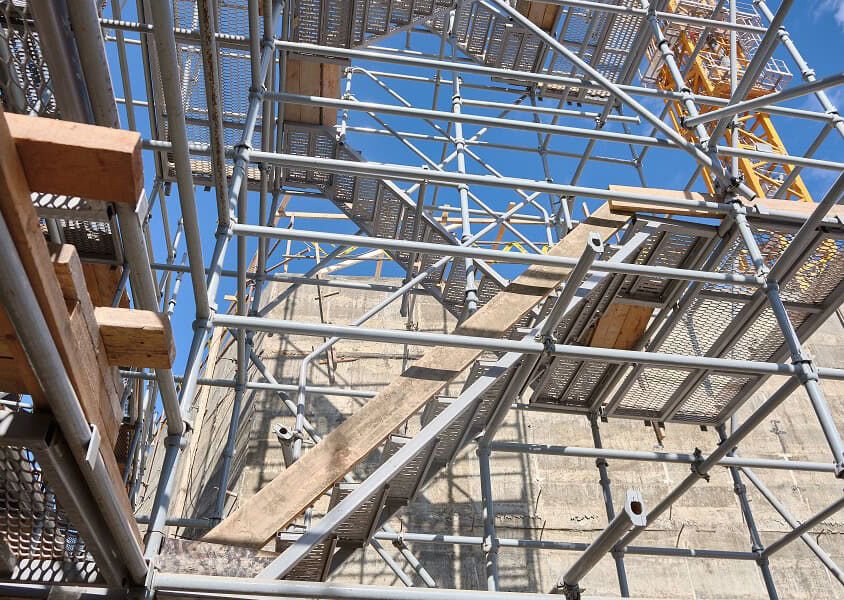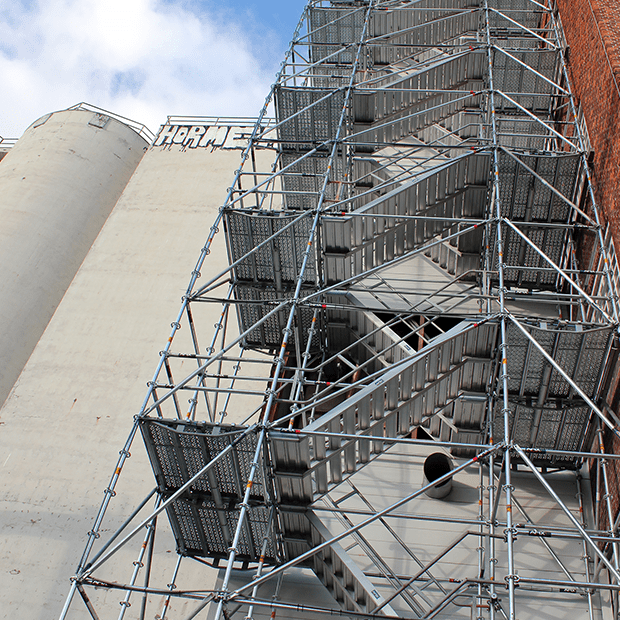Dependable Domestic Scaffolding for Homeowners in Need of Safe Renovations
Dependable Domestic Scaffolding for Homeowners in Need of Safe Renovations
Blog Article
Exploring the Various Kinds Of Scaffolding Utilized in Building Projects
The building industry depends heavily on numerous kinds of scaffolding to satisfy details job demands, each offering distinct advantages and applications. Typical framework scaffolding offers a tough foundation for general tasks, while suspended scaffolding is crucial for service high-rise structures. Various other alternatives, such as system and rolling scaffolding, satisfy effectiveness and mobility, respectively. The cantilever alternative confirms vital in city environments where space is constricted. Comprehending the nuances of these scaffolding kinds is important for optimizing safety and efficiency on building and construction websites, motivating a more detailed evaluation of their one-of-a-kind features and applications.

Traditional Structure Scaffolding
Conventional framework scaffolding is among the most extensively utilized methods in the construction sector due to its effectiveness and versatility. This system consists of vertical and horizontal structures that are assembled to develop a steady system for workers and materials. The primary components include vertical articles, straight ledgers, and angled dental braces, which together supply a solid structure that can sustain significant tons.
One of the essential advantages of traditional frame scaffolding is its versatility to different building projects, ranging from household structures to huge business structures. The modular layout allows for easy assembly and disassembly, making it reliable for both temporary and long-term jobs. Furthermore, the system can be personalized in height and size, suiting different structure styles and website problems.
Security is extremely important in scaffolding applications, and standard framework systems are furnished with guardrails and toe boards to prevent falls and make certain employee defense. Regular inspections and adherence to safety policies are important in preserving the stability of the scaffold (Scaffolding). Generally, typical structure scaffolding continues to be a fundamental choice in the building sector, providing a reliable platform for labor and improving general project efficiency

Suspended Scaffolding
Put on hold scaffolding uses an unique option for construction jobs that call for access to raised surface areas, especially in scenarios where traditional structure scaffolding may be unwise. This type of scaffolding is generally put on hold from the roof or upper degrees of a framework, using a system of platforms, ropes, and wheels to develop a working space that can be adapted to numerous elevations.
One of the key advantages of suspended scaffolding is its adaptability. It can be quickly rearranged or reduced to suit changes in construction demands, making it ideal for tasks such as window installment, frontage job, and upkeep on skyscraper buildings. Furthermore, the marginal impact of suspended scaffolding enables for much better use ground area in metropolitan atmospheres, where area is often limited.
Security is an essential consideration in the use of suspended scaffolding. In general, put on hold scaffolding gives a efficient and efficient remedy for accessing hard-to-reach areas in numerous building situations, boosting both efficiency and safety on site.
System Scaffolding
System scaffolding, typically concerned as a modern remedy in the scaffolding market, contains pre-engineered elements that can be quickly constructed and adjusted for various building and construction jobs. Scaffolding. This kind of scaffolding is defined by its modular layout, which permits for convenience and efficiency on work sites, fitting various heights and structural requirements
Commonly made from high-strength steel or aluminum, system scaffolding uses improved toughness and security. The elements consist of upright messages, straight journals, and angled braces, which adjoin securely, making sure a robust framework. The style often incorporates standardized fittings, streamlining setting up and disassembly processes, thus minimizing labor time and expenses.

Rolling Scaffolding
Rolling scaffolding is a flexible choice to conventional set scaffolding, created for wheelchair and ease of use on construction sites. This kind of scaffolding is composed of a system supported by frames with wheels, allowing workers to easily move it as needed. The movement attribute significantly improves productivity, as it reduces downtime connected Visit Website with setting up and taking apart fixed scaffolding.
Usually built from lightweight products such as light weight aluminum or steel, rolling scaffolding uses a durable yet portable solution for tasks needing constant repositioning - Scaffolding. It is specifically helpful in tasks such as painting, drywall installation, and electric work, where access to numerous elevations and areas is needed
Safety and security is paramount in rolling scaffolding design, with features such as locking wheels to avoid unintentional motion when in usage, and guardrails to secure workers from falls. Additionally, many versions are flexible in elevation, accommodating numerous job demands.
Cantilever Scaffolding

The style of cantilever scaffolding typically entails making use of arms or brackets anchored to a structure or structure, making it possible for the platform to expand external securely. Security is vital; thus, these scaffolds have to be crafted to stand up to different loads and ecological problems. Normal evaluation and upkeep are necessary to make certain structural integrity and worker safety.
Cantilever scaffolding is favored for its adaptability and effective use space, making it a preferred option in urban atmospheres where space constraints check over here prevail. In addition, it helps with much easier accessibility to high elevations, eventually adding to the total efficiency of building jobs. Similar to all scaffolding kinds, appropriate training and adherence to safety and security requirements are important for workers utilizing cantilever scaffolding.
Conclusion
Typical structure scaffolding provides security, while put on hold scaffolding uses versatility for elevated jobs. System scaffolding facilitates quick assembly, and rolling scaffolding boosts mobility for differing work atmospheres.
Conventional frame scaffolding supplies a sturdy foundation for basic tasks, while put on hold scaffolding is necessary for work on skyscraper structures.Moving scaffolding is a versatile choice to conventional set scaffolding, created for movement and convenience of use on construction websites. As with all scaffolding kinds, appropriate training scaffolding in education meaning and adherence to safety standards are critical for workers making use of cantilever scaffolding.
Standard framework scaffolding gives stability, while put on hold scaffolding uses versatility for elevated jobs. System scaffolding helps with fast setting up, and rolling scaffolding improves mobility for varying work atmospheres.
Report this page